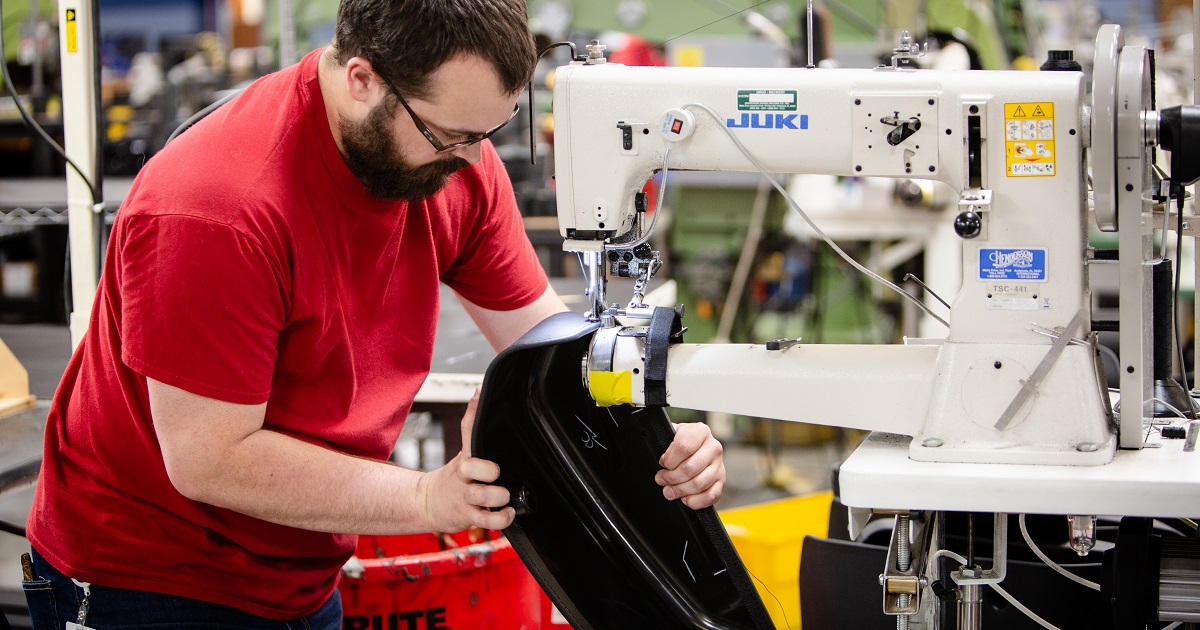For Media Inquiries
Contact Revee White, Director of Marketing and Communications at rwhite1@mem-ins.com or 573.499.4190.
As the demand for goods and services rises, so does the need to work. A lot of businesses are finding themselves trying to keep up. In the past, many employers would have turned to longer shifts. But more and more studies are showing the adverse effect of working over 40 hours a week. What is the true cost of overtime? How can companies offer time-and-a-half without the safety risk?
On this episode of the WorkSAFE Podcast, we sit down with Brye Lynn. She is the creator of The Safety Geek, where she helps educate as to why safety is the most important department in any profit-driven business selling product. As a certified safety professional, Lynn offers years of experience and expertise to those looking to keep their business safe and profitable.

First, we’ll talk about how overwork puts employees – and businesses – at risk. Then, we’ll discuss why businesses often embrace too much overtime. Finally, we’ll share tips to help employers manage growing labor needs.
Listen to this episode on the WorkSAFE Podcast, or read the show notes below.
Chronic overworking: Slipping under the radar
At many businesses, extra hours often slip under the radar. Employees offer to pick up more shifts. A manager may cover the next shift for a fellow employee. Busy seasons may mean double the orders – and double the time needed to handle them. Some employers just accept this as a cost of doing business. However, Brye Lynn has seen just how high the cost can be.
In one of her most memorable roles, she worked at a company that was open 24/7. Manufacturing was done on three shifts. At many large companies, employees working extra shifts can go unnoticed by safety personnel. “That’s how most safety people work,” Lynn shared. “It’s only one person to like, several hundred employees.” This was brought to Lynn’s attention one night when a team leader was injured. He’d put his hand in a stuck machine with a razor, and it sliced his wrist. Fortunately, the cut wasn’t too deep. But Lynn was confused. The razor was a known safety hazard. Employees were trained not to reach into the machine. So how had it happened?
The answer was simple; the team leader was tired. He’d been working since 7 AM, and the incident happened at 11 PM. He knew he wasn’t supposed to do it. But he just wanted to get the job done.
Fatigue on the job
According to Lynn, there are two types of fatigue: physical and mental. Employees start to experience them as their shift goes on. Physical fatigue can be seen when employees start to wear down. They may walk slower, yawn, or lighten their load by carrying less. To see mental fatigue, employers have to look a little closer. Employees may be slow to respond or speak slower. Further, they may appear drowsy or complain of headaches. Both types of fatigue are risky. They lead to a lack of awareness. And that leads to incidents.
Why is overworking accepted in the workplace?
Both employers and employees can be equally responsible for overworking. “You have the employee that actually wants to overwork,” Lynn explained. For many industries, overtime means that employees earn time-and-a-half. For those that want to make more money, it may seem like a perfect solution. However, overtime comes at a cost. Lynn notes that by taking on extra shifts, they spend less time with their family. Less time to take care of daily tasks may cause stress, and they may develop a short fuse.
Employers also play a role in overwork. They often take on too many orders or tight timelines. This puts pressure on the entire business to fulfill those promises. As a result, employees take on extra duties on top of their regular workload. Tired and unfocused, they are actually less productive. “They’re actually paying more to have the product produced,” Lynn pointed out.

3 ways to prevent overworking
Busy seasons can’t be avoided in some industries. Overworking is usually a short-term issue. Some employers accept it because they know it won’t last forever. Further, it can be difficult to find skilled workers that will stay at the business. Companies want to be able to fulfill the needs of their customers. But this results in extra duties being placed on existing workers. Lynn offers several tips to help business owners avoid overworking employees.
- Restructure the workday. If possible, encourage employees to save easier tasks for the end of the day. Focus on mentally-heavy tasks first. Then do easier tasks, like filing or repetitive work, later in the shift. This method can help businesses be more productive. “Once it’s restructured, they’re going to see benefits right away,” Lynn advises.
- Stagger shifts. Allow people to come in at different times. Many employers stick to common shift times: 9 AM to 5 PM, 5 PM to 1 AM, or even midnight to 8 AM. Try varying shift times. This way, you always have fresh-faced, rested employees on the job.
- Schedule people by rhythm. Everyone has a natural circadian rhythm, or a time cycle when they are most awake or need rest. However, employees are usually hired to work available shifts – and rarely work the ones that fit their rhythm the best. Try scheduling people based on when they are most active.
Making a case to management
Many employers are hesitant to make changes where overwork is involved. They know it won’t last for long. But it just isn’t worth the risk. If your business is experiencing overwork, then Lynn recommends the following steps to help leaders understand why change is needed:
- Gather data. “You need to be able to talk to your management team in the numbers they understand,” Lynn shared. Human Resources is a great place to start. Learn how many hours each person is working. Who is working more than twelve hours a day? Does company production go up when they do? Or does it just stay the same?
- Break down each job into tasks. Rate each role by its cognitive load rating, or how much focus it takes to do. For example, tasks like filing and sorting don’t require a lot of focus. However, observing a machine or other coworkers does.
- Look at labor standards. What are the standards for your industry or state? Lynn often looks to the International Labor Organization as a baseline to start with. Is your business is compliance?
Don’t accept the risk
Busy work seasons are inevitable. But accepting unnecessary risk isn’t. Fatigued employees put themselves, their coworkers, and the business at risk. Lynn knows that if the employee who cut his wrist had died, she would have had to justify his 17-hour day. She offers free resources to employers, and maintains a community of safety professionals. Safety is at the forefront of everything she does.
“I do not want to be on the stand in front of a judge and an attorney trying to justify that it was okay for you to overwork the employees,” she finished. “Because you will lose the lawsuit in a heartbeat.” Productivity is not worth the life or wellbeing of an employee.
For free safety posters, sample policies, and safety toolkits, visit our Resource Library. Then, read these five important safety lessons learned during COVID-19.